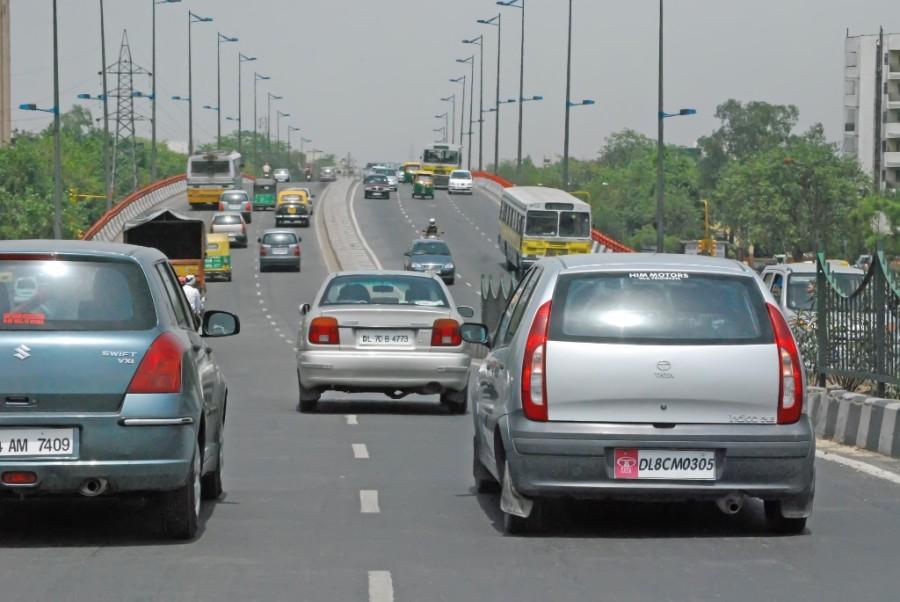India’s energy plan includes using solar and wind — and a lot more coal
October 6, 2015
By Shashank Bengali
Los Angeles Times
(TNS)
MUMBAI, India — India, the world’s third-leading carbon polluter, has pledged to aggressively expand its use of solar and wind power as part of a global agreement for battling climate change to be hammered out by December.
But the long-range energy plan does not commit India to overall reductions in the greenhouse-gas emissions that drive global warming and come mainly from coal-fired power plants, the source of 60 percent of the country’s energy. India plans to double its use of coal over the next five years, saying the cheap energy source is crucial to reducing poverty for its citizens.
Indian officials focused on their plans to slash the rate of carbon emissions, a calculation that measures how much carbon dioxide the country produces based on the size of its economy. India said that by 2030 it will have reduced its emissions rate by 33 percent, taking it to 35 percent below 2005 levels and bringing it in line with China.
Officials also said the country would increase its share of energy from non-fossil-fuel sources — including renewable energy, nuclear and hydropower – to 40 percent by 2030.
“It is a huge jump for India; therefore, it is a very ambitious target,” Environment Minister Prakash Javadekar said Friday as he introduced India’s plans ahead of the international climate summit that is set to begin late next month in Paris.
With India’s economy growing at an annual rate of about 7 percent, however, its total carbon emissions can keep rising even as emissions intensity improves.
“India’s pledge to make a significant reduction in emissions with strong support for renewable energy compared to business as usual is to be warmly welcomed,” said Saleemul Huq, senior fellow at the International Institute for Environment and Development, an independent policy organization.
“However, the reliance on coal should perhaps be re-examined. The sooner they get to fossil-fuel-free energy, the better.”
The Paris summit is expected to produce the first global compact in which all nations commit to new steps to combat climate change and reduce carbon emissions. The U.S. and China, the two biggest emitters of carbon dioxide, have each pledged to bring down their overall greenhouse-gas emissions, with China announcing that its emissions will peak in 2030 if not sooner.
India, the last major economy to submit its Paris proposal, has long been viewed as a stubborn if not outright hostile participant in international climate talks. Indian officials resent demands from the U.S. and other heavy-polluting industrialized nations that it reduce its use of carbon-heavy fossil fuels, likening it to placing shackles on its economic development.
Indian officials have said they will not be pressured into declaring a peak for their carbon emissions, and some experts said the country’s plans were just as robust as those of the U.S. and China.
“Even when China peaks in 2030, its emissions will still be similar to India’s,” said Chandra Bhushan, director of the Center for Science and the Environment, a think tank in New Delhi. “A peaking year is not something India should even talk about right now.”
The think tank’s projections say that by 2030, India’s total carbon emissions could reach 3.5 tons per capita, which would still be about one-third the per capita emissions of the U.S. and China. India has announced steps to make its existing fleet of coal plants — among the dirtiest in the world — operate more efficiently and to phase out some aging power stations.
India also called on industrialized nations to help the country finance its transition to clean energy, saying the move to renewable and other sources will cost at least $2.5 trillion by 2030. Over the last decade, India’s use of renewable energy has increased substantially, but Prime Minister Narendra Modi’s government has been pushing the U.S. to furnish low-cost loans and to share technology to make solar and wind power more affordable.
“Our efforts to avoid emissions during our development process are also tied to the availability and level of international financing and technology transfer since India still faces complex developmental challenges,” India’s proposal read.
India’s proposal was submitted to coincide with the anniversary of the birth of Mahatma Gandhi, and the 38-page document was peppered with aphorisms attributed to the revered independence hero, such as, “One must care about the world one will not see.”
———
©2015 Los Angeles Times
Visit the Los Angeles Times at www.latimes.com
Distributed by Tribune Content Agency, LLC.








